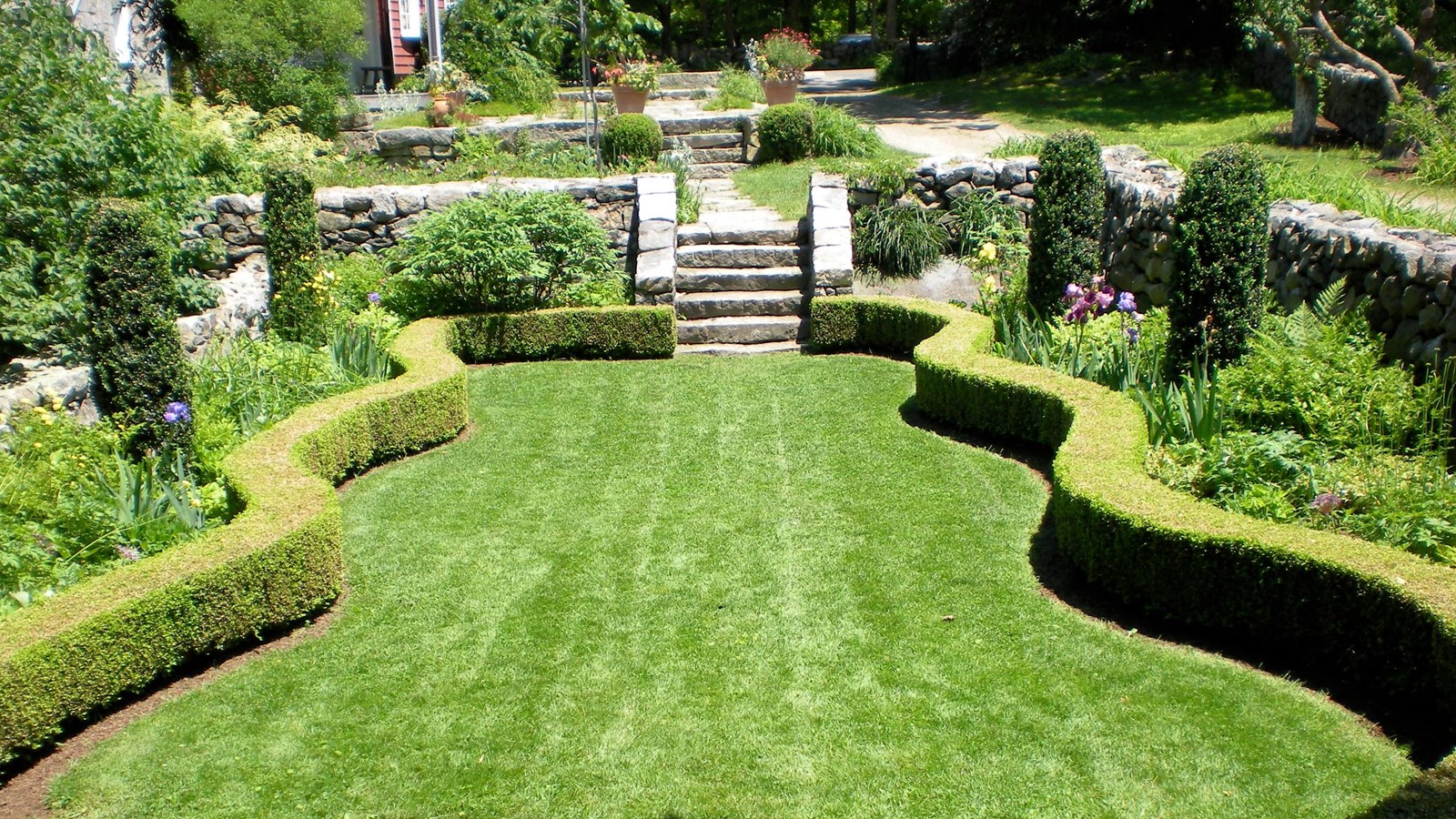Last updated: June 22, 2023
Place
Sunken Garden

NPS Photo
Cellular Signal, Pets Allowed, Scenic View/Photo Spot
The Sunken Garden is a defining feature of the landscape of Weir Farm. Commissioned by Cora Weir Burlingham in the early 1930’s this small, intimate space is defined by the stone retaining walls and curving flowerbeds edged with dwarf boxwood. Blooms of irises, peonies, bleeding hearts, and many more dynamic garden plants offer beauty and inspiration in the Sunken Garden throughout the seasons. It is a favorite spot for painters, as is the nearby stone potting shed.
History
When Cora Weir Burlingham, Julian Alden Weir's youngest daughter, took possession of the farm in 1931, she found it to be a “shambles,” and immediately initiated ambitious renovations and additions to the house, and had several new gardens designed and installed.
With her education in landscape design, and a personal interest in gardening, Cora Weir Burlingham had a formal sunken garden commissioned next to her house. This garden was very innovative for the day, and because of its unusual features, it was featured in James M. Fitch and F. F. Rockwell's 1956 book, Treasury of American Gardens.
Work started on the Sunken Garden in 1932, and was completed in 1940. It was designed by Vera Breed. Although no drawings of the plan have survived, the garden was fashioned in the popular Colonial Revival style. The small, intimate space, defined by stone retaining walls on all four sides, was laid out with curving flowerbeds backed by tall arborvitae and edged with dwarf boxwood, a characteristic feature of colonial-style gardens.
Cora had the garden redesigned by Friede R. Stege in 1969. Stege would include more spring and summer plantings, such as azaleas, primroses, columbine, foxglove, and lupine, compared to the varietals that Breed installed in the garden.
In 1995, the National Park Service began to inventory, map and photograph the existing plants in the Sunken Garden. The garden was rehabilitated, with the help of the Wilton Garden Club, based upon the site’s Cultural Landscape Report, as well as the many historic photographs that documented the garden during Cora’s tenure.
Weir Farm National Historical Park works with volunteers, partners, and garden clubs to continue the preservation of the park’s magnificent historic gardens. You can be part of the preservation story by becoming a Garden Volunteer! If you love gardening, spending time outdoors, or want to be part of the preservation of this National Park Service gem, join us in maintaining the beauty of your national park! To learn more about volunteering, visit the park’s website.
